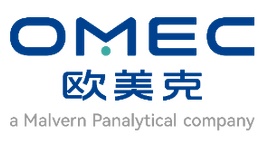方案详情文
智能文字提取功能测试中
ARTICLENATURE COMMUNICATIONS|DOI: 10.1038/s41467-018-07190-1 ARTICLE DOI: 10.1038/s41467-018-07190-1 OPEN Vibrational fingerprint of localized excitonsin a two-dimensional metal-organic crystal M. Corva12, A. Ferrari1.5, M. Rinaldi, Z. Feng@16, M.Roiaz3, C. Rameshan3, G. RupprechteroiD3,R. Costantini12,M. Dell'Angela, G. Pastorel, G. Comelli12,N. Seriani4 & E. Vessellio11,2 Long-lived excitons formed upon visible light absorption play an essential role in photo-voltaics, photocatalysis, and even in high-density information storage. Here, we describe aself-assembled two-dimensional metal-organic crystal, composed of graphene-supportedmacrocycles, each hosting a single FeN4 center, where a single carbon monoxide moleculecan adsorb. In this heme-like biomimetic model system, excitons are generated by visiblelaser light upon a spin transition associated with the layer 2D crystallinity, and are simul-taneously detected via the carbon monoxide ligand stretching mode at room temperature andnear-ambient pressure. The proposed mechanism is supported by the results of infrared andtime-resolved pump-probe spectroscopies, and by ab initio theoretical methods, opening apath towards the handling of exciton dynamics on 2D biomimetic crystals. ( 1 Dipartimento di Fisica, Universita degli S tudi d i Tr ieste, via A. Valerio 2 , Triest e 34127, Italy. I s t ituto Officina dei Materiali CNR-IOM, S.S. 14 k m 16 3 .5, AreaScience Park, Basovizza, Trieste 34149, Ital y . 3Institute of Materials Chemistry, Technische Universitat Wien, Getreidemar k t 9-B C -01, Vienn a A-1060, Austria. 4 T h e Ab d us S a lam I n te r n ational Centre for The o retical Physics, Str. Cos t ie r a 11, Trieste 3 4151, Italy. 5P r es e nt ad d ress: I CAMS, Ruh r -UniversitatBochum, Universitatsstr. 150, Bochum 44801, Ge rmany. Present add r ess: Dep a rt m ent of Chem i cal Engin e ering and Materials Science, University of California, Irvine, Irvi n e, C A 92697 , USA. Cor r espondence and re q uests for ma t erials should be addressed to E .V. (em a il: eve s s e l li@ un i t s . i t) ) 'he absorption of visible light in a material can lead to theformation of excitons, i.e. pairs composed of an excitedelectron and the associated hole. Nature exploits excitonsin nanoscale systems in order to harvest and funnel energy tochemical reaction centers. Their properties and dynamics aretherefore crucial for biomimetic optoelectronic, photovoltaic, andphotocatalytic applications, but excitons are difficult to controland characterize. In particular, reducing electron-hole pairrecombination is essential to produce long-lived excitons, max-imizing efficiency. Long-lived excitons in molecular systems have been observedin recent years, with lifetimes up to hundreds of picoseconds atroom temperature. The mechanism determining the coherencetime is based on the coupling between the exciton and the bath ofsurrounding nuclear motions, in connection with self-trappinglocalization effects. Indeed, the soft character of organic frameworks induces a strong coupling between molecular, nuclear, andelectronic dynamics, resulting in a vibronic manifold with highdensity of states that can facilitate mixing’. Another importantcontribution to the exciton lifetime originates from the occur-rence of spin transitions, yielding spin crossover metastable states.Indeed, if a switch in the spin configuration of the moleculeoccurs, the system can be trapped in a triplet excited, none-quilibrium state. The spin transition can be driven by symmetrybreaking and entropy differences, associated with spin multi-plicity and with the number of accessible vibrational states. Inseveral iron(II) complexes, spin transitions can be induced bythermal excitation, but light-induced excited spin state trapping(LIESST) through a multiple-step mechanism has also beenobserved., thus enabling the potential development of light-controlled molecular bits in spintronic devices. The search formaterials capable of trapping excited states even at room tem-perature has started long ago, and some promising systems havealready been identified6.8. The role of ligand fields in the light-induced spin change process was also discussed78. When light isexploited to induce the singlet-triplet transition as in the LIESSTprocess the triplet generation process may be associated withintersystem crossing or singlet fission mechanisms, thus involvinga short-lived, intermediate singlet excited state that relaxesthrough a cooperative path involving adjacent chromophores9.In the latter case, light absorption generates a spin-singlet excitonthat converts within few hundreds of femtoseconds into apair of spin-triplet excitons residing at neighboring sites’. Thetwo generated spin-triplet excitons initially correlate to forman overall spin-singlet state, thus making the transition spin-allowed. Singlet fission does therefore not occur in single, isolatedsmall-molecules, since at least two adjacent sites are needed toaccommodate the triplet excitation products’. Finally, for singletfission to be spontaneous, the singlet excitation energy needs tobe more than twice the triplet excitation energy. So far, theseprocesses have been observed only in nanocrystals or thin films,but not in a purely 2D system to the best of our knowledge.Exciton multiplication by singlet fission could indeed yieldpractical applications by improving the efficiency of photovoltaicdevices49, as well as the adsorption properties of gas sequestra-tionandconversiondevices byexploitingg cooperativemechanisms10 Here, we demonstrate that, by means of ligand adsorption, it ispossible to localize long-lived Frenkel excitons in a self-assembled2D molecular system, and to detect them via their effect on thevibrational spectrum of the ligand itself (carbon monoxide), evenat room temperature and near-ambient pressure. We show thatnonlinear optical sum-frequency generation (SFG) spectroscopyis a unique tool for this kind of investigation as it mimics a pump-D-and-probe experiment, paving the way for simultaneous con-trolled generation and characterization of localized excitons in a 2D metal-organic system on a laboratory scale. Moreover, thegeneration of long-lived excitons is affected by the degree of orderof the metal-organic monolayer due to the quantum-mechanicalnature of the involved processes, suggesting a practical approachto systematically tune the excitonic properties. We describe a self-assembled 2D metal-organic crystal, composed of graphene-supported macrocycles. Each of the latter host a FeN4 center atwhich a CO ligand can bind. This system represents a heme-likebiomimetic model, where we generate excitons by visible laserlight, and detect them by observing the influence on theCO-ligand stretching mode at room temperature and near-ambient pressure. These findings may have an impact on thefundamental understanding of exciton"writing and reading”andcould open up pathways toward more efficient photovoltaic,photocatalytic, or information storage devices. Results Sample characterization. It would be of fundamental and tech-nologicallinterestt tto mimic the above electron- and spin-transition properties within the framework of controlled andsynthetic (model) systems. For this purpose, we exploitmetal-organic 2D films and crystals, which can be obtained byself-assembly methods on a weakly interacting and convenientsupport like graphene, yielding a n-conjugated system. For tripletexciton formation to take place, it is crucial that the inter-molecular coupling is on the one hand strong enough to ensureefficient singlet fission and on the other hand weak enough toallow fast diffusion and separation of triplets, providing optimalconditions. Singlet excitons are short-lived and might be delo-calized over more than one site in a 2D crystal, whereas tripletexcitons are long-lived, and tend to be localized on a singlemolecular site. The ability of excitons to diffuse reduces therecombination chances, making molecular crystals efficient sys-tems for singlet fission processes. In the specific case, we havechosen to adsorb Fe-phthalocyanines (FePc) under ultra-highvacuum (UHV) conditions on a single, complete graphene (GR)sheet grown in situ on the Ir(111) single crystal termination(Fig. la). The FePc molecules are thermally stablel2-14, weaklycouple to the GR support, and form a well-ordered 2D crystalwith almost square symmetry (Fig.1b,c). We exposed this systemto a near to atmospheric pressure (1-10 mbar) of carbon mon-oxide. By exploiting IR-Vis Sum-Frequency Generation spectro-scopy (IR-Vis SFG), we monitored the evolution of the C-Ostretching intensity as a function of the CO pressure at roomtemperature, thus following the FePc carbonylation processin situ. In the following, we will show that IR-Vis SFG acts as apump-and-probe experiment, generating long-lived excitons,which are detected by their effect on the vibrational modes of theCO ligand. This approach offers considerable advantages overother methods, being able to investigate the system in situ at near-atmospheric conditions16,17. In fact, phthalocyanine h:already shown nonequilibrium spin crossover properties that canbe locally controlled by means of the tip of a scanning tunnelingmicroscope (STM) after adsorption at cryogenic temperature inUHV on a substrate that crucially affects the spin state of thecentral metal atom18-20. For similar systems, STM has also shownthe potential to observe the dynamic behavior of organic mole-cules at surfaces, yielding detailed information about energeticsand kinetics2. As an alternative, adsorption and thermal deso-rption of small ligand molecules that interact with the fourfoldcoordinated metal center were employed to tune the magneticcoupling of metal-organic complexes to substrates22-24. Thelight-induced switching can be exploited as a way to generatea nonequilibrium or metastable molecular electronic and spinconfiguration, since the optical pumping yields excitation of the b Fig. 1 Structural characterization of the FePc/GR system. a STM imageof bare graphene on Ir(111). b STM image of the FePc single, well-orderedlayer on graphene and c the structural model of the molecules.d Aboundary between ordered and disordered domains. All images were takenunder UHV conditions at 4 K[a Vbias =+0.1V,1=1nA; b, c Vbias =-2.0V, 1=0.2 nA; d Vbias =-2.0V,I=0.1nA; error bars: a, b 3 nm,d 5nm metal-to-ligand charge transfer that rapidly decays to a high-spinstate. However, cryogenic temperatures are needed to promoteligand adsorptionandiilmmobilizationnof the molecules,quenching the spin properties originating from the interactionwith the supporting, underlying substrate. Ligand adsorption. We have grown the ordered FePc monolayerunder UHV conditions on the single, complete GR sheet on the Ir(111) single crystal termination. The almost square lattice, char-acterized by an angle of 87° (Fig. 1b, c), similar to the case ofCoPcs25, has lattice vector lengths of 14.1 and 13.6 A. The FePcmonolayer lattice is rotated by 13°with respect to the underlyingGR sheet, while the molecules are rotated by 18° with respect tothe FePc lattice. Depending on the exact procedure (FePcdeposition and post-annealing temperature), the prepared layersmay show the co-existence of both ordered and disordereddomains (Fig. 1d). While following the carbonylation processin situ, we observed the growth of four distinct vibronic featuresin the C-O stretching region for the 2D FePc/GR crystal,while nosuch features were observed for the multilayer, as detailed below.A complete bare GR sheet is not active toward CO adsorptionand passivates the underlying Ir metal surface26,27. Indeed, uponexposure of the bare GR/Ir(111) system to several mbar of CO,IR-Vis SFG still detects only the GR phonon at 1608 cm-l, cor-responding to the in-plane optical G modes associated with thestretching of the pairs of sp2-bonded C atoms28, while no C-Ostretching is observed (Supplementary Fig.1). Intercalation of COunder the GR sheet would produce a very intense vibronic signalin the 2040-2080 cm-1 range26. Instead, on the 2D FePc/GR/Ir(111) crystal features associated with the C-O stretch progres-sively develop in the 2000 cm- region for CO pressure above 1mbar at room temperature. Due to the large distance between Fecenters at which the CO molecules bind, a contribution ofcoverage-dependent nonlinear dipole effects to the SFG intensitycan be ruled out,indicating that the observed IR-Vis SFG signalcan be exploited to measure the CO uptake on the Fe centers(Fig. 2). By fitting the experimental data with an establishedLangmuir adsorption kinetic model (dashed line), we obtain aCO-Fe binding energy of -0.3 ±0.1 eV. In parallel, we performeda thorough set of ab initio calculations in order to get a deeperunderstanding of the system. Concerning the CO adsorptionenergy, we obtain a theoretical value of -0.34 eV for a single COligand adsorbed at each iron center (mono-coordination), inperfect agreement with the experimental data, and find thatfurther CO adsorption beyond mono-coordination is stronglyendothermic. The experimental uptake profile is very similar tothat reported for FePcs adsorbed at the bare Ir metal surface29,and the saturation pressure at room temperature is in line withworking gas partial pressures of heme systems in nature30. Inaddition, by means of ab initio thermodynamics we computed the(CO)FePcs saturation curve (blue line in Fig. 2). The remarkableagreement further confirms the proper description of the CObonding mechanism (see Supplementary Note 1). We also findfrom our calculations that the carbonylation of the FePc quenchesthe spin of the molecule (see Supplementary Fig.2 for furtherdetails), i.e. the total spin of the (CO)FePc is S= 0, at variancewith the FePc molecule without the CO ligand (S=1), inagreement with the literature31. Therefore, the expected groundstate is a singlet state (paired electrons). Vibrational characterization and the role of visible light. Adetailed analysis of the IR-Vis SFG C-O stretch fingerprint (Fig. 3and Supplementary Figs. 3-6) identifies four contributions at1986, 1992, 2005, and 2011 cm-1. The SFG signal was decon-voluteddbby meansof annestablished leleaast-squareefitting a b C Fig.2 Carbonylation of the FePc monolayer on graphene. a Adsorptiongeometry for a single CO molecule on FePc.b Spin polarization (Pup-Pdown)for the triplet obtained in DFT+U (blue: negative values; red: positivevalues).c Relative coverage of the adsorption sites of a layer of FePcmolecules as a function of the CO pressure. The experimental data (dots)are affected by an error of roughly ±0.1 on the vertical axis. The theoreticalcurve (blue, solid line) is obtained within the framework of a pure ab initioapproach, while the experimental data are fitted by a Langmuir isotherm(black, dashed line) procedure32, according to an effective description of the non-linear second-order susceptibility (the complete set of fittingparameters is reported in Supplementary Tables 1 and 2). Thesurface density of the Fe centers is very low due to the large size ofthe FePc molecules (about 0.03 ML with respect to the underlyingIr metal surface). Despite this we managed to measure theresonant signal due to the strong CO dipole and the graphene-enhanced scattering. In the present case, we have used 入vis = 532nm (photon energy: 2.33 eV), thus matching a typical singletexcitation energy. The degree of order of the layer stronglyaffects the resonant lineshape, as can be observed from the twospectra plotted in Fig. 3, showing a remarkable change of therelative peaks intensities and a Gaussian broadening for the dis-ordered system (see Supplementary Tables 1 and 2), while all Wavenumbers (cm) Fig. 3 IR-Vis SFG intensity spectra. Spectra of the C-O stretching regioncollected in situ at room temperature in 10 mbar CO on the ordered (top)and disordered (bottom) FePc monolayer on graphene. Experimental data(black dots) are represented, together with the results of the best fit (bluelines) and the interference of each resonance with the nonresonantbackground according to the effective susceptibility, as described in the text(Avis =532 nm; ppp polarization) other lineshape parameters including line positions remain con-stant. In contrast, carbonylation of a FePc multilayer (3D crystal)adsorbed on the same graphene sheet yields a single resonantpeak at 2012 cm-1 with a different relative phase with respect tothe nonresonant background (Fig. 4a and b and SupplementaryTable 1). The multiplet is therefore an inherent feature of the 2Dsystem. Analogous measurements were also performed by meansofPolarization-Modulation Infrared Reflection AbsorptionSpectroscopy (PM-IRAS), for which a broadband mid-IR radia-tion beam is shined on the sample surface33, thus inducing purevibrational transitions instead of vibronic excitations. The PM-IRAS spectra obtained upon room temperature carbonylation ofthe FePc multi- and mono-layers on GR are reported in Fig. 4cand d, respectively. At variance with the corresponding vibronic(SFG) spectra, only one peak appears in both cases, at 2008-2009cm-. This clearly associates the vibronic splitting observed byIR-Vis SFG with the electronic transitions induced by theimpinging visible light. The small experimental discrepancy in thevibrational energies (2-4cm-l) between SFG and IR experimentsis likely due to the anharmonic coupling of the C-O stretch tofrustrated lateral modes34 一coco Fig. 4 Vibrational vs. vibronic fingerprints of the C-O stretching modefor the carbonylated FePc monolayer. Comparison between IR-Vis SFG(a and b) and PM-IRAS (c and d) intensity spectra collected in situ atroom temperature in 10 mbar CO in the C-O stretching region for thecarbonylated FePc monolayer (b and d) and multilayer (a and c) ongraphene. For the IR-Vis SFG spectra, Avis=532 nm and ppp polarizationwere used Exciton dynamics. In the following, we discuss possible scenariosof interpretation. Trans-coordination and ligand environmenteffects in heme carbonyls have been found to induce shifts inthe C-O stretching mode (of the same order as the ones wemeasure: 5-10 cm-), both in model and in biologic systems35-37A varying coordination of the Fe atom to the underlying gra-phene sheet and an inhomogeneous coupling contribution38,39depending on non-equivalent adsorption geometries of the FePcmolecules with respect to the graphene Moire, cannot account forthe observed multiplet since it is absent in pure IR measurements.The measured splitting can neither be ascribed to multiple COcoordination, since the symmetric and antisymmetric stretchingmodes in Fe poly-carbonyls would be separated by several tens ofwavenumbers, at variance with the observed splitting of only afew cm-. Consistently, the absence of the splitting in our pure IR spectra excludes these interpretations. Finally, as mentioned, ourDFT calculations confirm that only mono-coordination is ener-getically possible. In order to investigate the actual lifetime of the excitedelectronic states, we studied the electron dynamics of the FePcmonolayer on GR/Ir(111) by means of Time-Resolved Two-Photon Photoemission(TR-2PPE). The experiments wereperformed at room temperature in order to correlate with theIR-Vis SFG results. However, due to the nature of thephotoemission process involving low kinetic energy photoelec-trons, we investigated the system in UHV conditions, thuswithout adsorbed CO. We employed a 515 nm pump pulse tocreate a transient population of excitonic states that weresubsequently probed by a 257.5 nm pulse40. Two transient stateswere detected in our measurements (see Supplementary Note land Supplementary Fig. 7). A short-lived excited state (SL- TsL<570 fs), located 1.3 eV above the Fermi level, was found to decayin a long-lived, lower energy state (LL - TLL=28±8 ps) at E-EF≤0.6 eV.We associate the SL state with the electrons excitedin the FePc LUMO, supported by previous STS measurements inliterature. A precise determination of the energy position of theLL state was not possible, because the first 0.5 eV above thesecondary electron cutoff were not accessible with our currentexperimental setup due to detector saturation. Nevertheless, anupper binding energy limit of 0.6eV could be obtained. Ourfindings on this system are in agreement with previous four wavemixing measurements performed on FePcs in a dimethylsulfoxidesolution, yielding a short-lived state (t<170 fs) decaying in alonger lifetime state (t ~40 ps)42, and with other pump-probeinvestigation4s3 Discussion Herein, we propose that the observed SFG vibronic splitting isassociated with contributions from excited triplet electronicmolecular states (unpaired electrons) that are populated uponexposure to the visible light beam, similar to a LIESST scenario.We calculated the vibrational modes for the singlet ground stateand for two different triplet states, (see Supplementary Fig. 2), andobtained vibrational frequencies of 2016, 2049, and 2055 cm-,respectively. The calculated splitting is comparable with thesplitting among peaks in the SFG spectrum, spanning about30 cm-and with a separation between adjacent features of6cm-1. The increase in the C-O stretching frequency calculatedfor the triplet states with respect to the ground configuration isconsistent with the fact that CO adsorption is weakened, inagreement with an electron back-donation mechanism accordingto the Blyholder model of CO bonding, making this molecule anideal probe of the local electron density. A number of observednon-equivalent resonances agrees well with a level splitting that isexplained within the framework of a crystal ligand field theorypicture, in which a C4v symmetry system is expected to split itsenergy levels. The latter geometry applies indeed to the carbo-nylated FePc, since binding of CO lifts the Fe atom from themolecular plane, inducing a symmetry break that activates thesinglet fission process, as recently observed4. Indeed, the depen-dence of the relative intensity of the peaks on the ordering of the2D crystal can be associated with quantum cooperative interac-tions between the interacting molecules within the framework ofa singlet fission origin of the triplet excited states, allowing forsubsequent triplet diffusion and minimizing recombination.Accordingly, it is known that there are three synthetic strategiesto create and/or strengthen cooperativity, i.e. incorporation ofhydrogen-bonded networks, incorporation of n-stacking, andcoordination of ligands. Moreover, low- to high-spin conver-sions are accompanied by profound changes in the molecular Fig. 5 Jablonski diagram of the exciton formation mechanisms. The visibleradiation yields excitation of the fundamental low-spin (LS) state into anexcited singlet configuration, followed by fast relaxation into long-livedtriplet high-spin (HS) states through inter-system crossing (ISC) andsinglet fission (SF) mechanisms properties, depending on the new distribution of the 3d valenceelectrons, and therefore including optical, magnetic, structural,and indeed vibrational fingerprints. In the present case, the COmolecule adsorbed at the Fe center acts both as a ligand and as avibrational identifier. Corroborated by our ab initio DFT simu-lations, we can propose the mechanism depicted in the Jablonskidiagram of Fig. 5. The visible radiation pumps the system from alow-spin ground, singlet state (s=0) to an excited singlet state(HOMO-1 to LUMO transition). The latter cooperatively decaysvia a singlet fission process to high-spin triplet states that canthen be probed by means of IR-Vis SFG. Time-resolved 2PPEexperiments (see Supplementary Fig. 7 and SupplementaryNote 1) yield lifetimes of less than 570 fs (SL) and of 28±8 ps(LL),respectively, for the two corresponding excited states of thedecarbonylated FePc/GR, in line with results obtained on similarmolecules40,44-47 This explains why the SFG measurements areable to catch the population of the most stable configuration (LL),since the IR and Vis pulses have a similar duration. Moreover, wefind energies of 1.3 and<0.6eV for the two excited states,respectively. This further supports our findings since, as observedin the introduction, for singlet fission to be spontaneous, thesinglet excitation energy needs to be more than twice the tripletexcitation energy-9 In summary, we have shown that a self-assembled carbonylatedmetal-organic 2D crystal supported on graphene, upon exposureto visible light at room temperature, can sustain long-livedexcitons (tens of ps). Both the presence of the CO ligand at the Fecenter and the 2D network are essential for the stabilization of theexcitons that is why they are not observed on the multilayer. Thisis due to the peculiar mechanisms involved in the LIESST process,including singlet fission that relies on the appropriate interactionbetween neighboring centers. A templating effect by the substratemay also be further exploited. Moreover, this work shows that IR-Vis SFG is a unique tool for this kind of investigation as it mimicsapump-and-probe experiment.Visible radiationgenerates excitons that can be simultaneously detected through their effecton the internal stretching mode of the adsorbed carbon monoxideligand, a convenient and accurate way to control, investigate, andcharacterize complex processes in metal-organic molecules, inwhich electronic and nuclear degrees of freedom interact in non-trivial ways. Methods Sample preparation. The same sample preparation recipes were applied in thethree experimental setups, for IR-Vis SFG, PM-IRAS, and STM measurements,respectively. The Ir(111) single crystal (Mateck) was cleaned by standard cycles ofArt sputtering and annealing in UHV, alternated with oxygen treatments. Tem-perature was monitored by means of a K-type thermocouple. A complete graphenesingle sheet was grown on Ir(111) by thermal cracking of ethylene dosed from thebackground in vacuum, following established procedures26,48. After saturation withethylene at room temperature, the crystal was annealed to 1100 K in vacuum. At1100 K, an ethylene background was introduced, and the temperature was furtherincreased up to 1300 K. Temperature cycles (1300-500-1300 K) followed, always inethylene background. In order to check the integrity of the graphene layer, COadsorption experiments were performed. CO does not stick on a complete gra-phene sheet, and intercalation occurs at mbar pressure only if defects are present2.In the latter case intercalated CO, adsorbed at the Ir(111) surface, contributes witha very intense vibronic feature in the range 2040-2080 cm-1 26. In the IR-Vis SFGspectra, only the graphene phonon could be observed: more specifically, no signalcould be detected in the C-O stretching region (see Supplementary Fig. 1). Fur-thermore, position, phase, and intensity of the GR-related vibron did not change,thus confirming the graphene integrity. FePc molecules (TCI Europe, I0783-1G,132-16-1, purity 98%) were evaporated from a quartz crucible, heated in UHV bythermal contact with a resistively heated tantalum filament. After an initial out-gassing treatment, the molecules were evaporated from the crucible with a back-ground pressure in the low 10-10 mbar. No SFG signal originated from the FePcsadsorbed on graphene. Indeed, their planar adsorption geometry, due to the weakcoupling with the carbon sheet, yields no SFG active modes, i.e. vibrationalmodes with a dipole component parallel to the surface normal. Infrared-Visible Sum-frequency generation spectroscopy. IR-Vis sum-fre-quency generation vibronic spectroscopy measurements were performed in adedicated setup32. A UHV system with a base pressure of 5×10-11 mbar hostsstandard surface science preparation and characterization techniques, and it isdirectly connected to a high-pressure cell for in situ IR-Vis SFG spectroscopy. Thereactor is equipped with a gas system to handle the reactants’ pressure in the 10-9-10+2 mbar range. CO was dosed from aluminum bottles through aluminumpiping in order to avoid the formation of Ni carbonyls. The inlet and outlet of thelaser beams are provided by UHV-compatible BaF2 windows. The Ir(111) disc wasmounted on Ta wires, used also for resistive heating. The excitation source (Ekspla)delivers a 532 nm (2.33 eV, 30 ps, 50 Hz,0.01 mJ pulse-at 1% power) visible beam0Wand tunable IR radiation in the 1000-4500 cm-range. After normalization to theIR and visible excitation intensities, the SFG spectra were analyzed by least-squaresfitting to a parametric, effective expression of the nonlinear second-ordersusceptibility32,49. The expression (reported here below) well reproduces theobserved lineshapes, accounting for the resonant IR-Vis vibronic transitions andfor the nonresonant background, and describing all the interference terms: where, ANRes and Ak account for the amplitudes of the nonresonant and kth-resonant contributions, respectively, Ao is the phase difference between the kthresonant and nonresonant signals, wk is the energy position of the line, and I itsLorentzian broadening, related to the dephasing rate, which in turn stems from theenergy lifetime and from the elastic dephasing of the excited vibronic state50. Inorder to account for inhomogeneity broadening, the lineshape was also convolutedwith a Gaussian envelope. In the figures of this paper, we plot the normalized IR-Vis SFG signal intensity (gray dots) together with the best fit (blue lines). We alsoplot (color-filled curves) the intensity of each resonance and its interference withthe nonresonant background by calculating,with the parameters obtained from thefitting procedure, the following quantity: These plots directly put in evidence the amplitude and the relative phase foreach of the resonances. Further details can be found in our previous work32. In thepresent study, all spectra were collected in the ppp polarization configuration(SFG-visible-infrared). Polarization-modulation infrared adsorption spectroscopy. The PM-IRASexperiments were performed in a custom-built UHV experimental chamber, pre-viously described and successfully applied in various investigations. In brief, thechamber comprises two parts, a classical UHV chamber and an UHV-compatiblehigh-pressure cell51,52. The upper UHV section allows sample preparation andcharacterization by standard tools of surface science, such as ion bombardment andannealing, X-ray photoelectron spectroscopy (XPS), low energy electron diffraction(LEED), and temperature programmed desorption (TPD). The sample can betransferred under UHV to the lower section, a gold-coated spectroscopic high-pressure cell in which polarization-modulation IRAS (PM-IRAS) experiments canbe performed in a pressure range from UHV to 10 mbar. PM-IRAS (Bruker IFSM-166 v/S FTIR spectrometer, liquid N2-cooled HgCdTe detector, HINDS PEM-90ZnSe photoelastic modulator) was exploited to investigate the vibrational proper-ties of the species adsorbed on the sample. The basic principle of PM-IRAS is thatthe local electric field induced by s-polarized light, when impinging at near-grazingincidence on a metal surface, is vanishing53. Hence,no absorption of s-polarizedlight will occur by molecules adsorbed on the surface. On the other hand, p-polarized light will be absorbed by molecules both in the gas phase and adsorbedon the surface. Consequently, the demodulation of the signal obtained from s- andp-polarized light provides inherently surface specific information. Scanning tunneling microscopy. Low Temperature Scanning Tunneling Micro-scopy (LT-STM) measurements were carried out at 4 K with an Omicron LT-STMsystem. The microscope is hosted in a UHV chamber, operating at a base pressureof1×10-10 mbar. Images were collected in constant current mode, with the biasapplied to the sample and a grounded tungsten tip. STM images were analyzed bysubtracting a background plane to correct the sample tilting and by applying anappropriate affine transformation to calibrate the lateral scale. Time-resolved two-photon photoemission. 2PPE measurements were carried outin the SUNDYN-ANCHOR end-station of the ALOISA beamline at the Elettrasynchrotron radiation facility in Trieste (Italy). Pump-and-probe pulses were thesecond and fourth harmonic of the output of a Yb:YAG fiber laser (AmplitudeSystemes, Tangerine HP). The sample was excited by second harmonic pulses (hv=2.4eV, 515 nm) and probed by fourth harmonic pulses (hv=4.8 eV, 257.5 nm)of the laser. The time delay between pump-and-probe pulses was varied via amotorized delay line. The repetition rate of the laser was 577 kHz, and the pulsewidth was 350 fs in the fundamental harmonic. We employed pump energies ofabout 0.1 uJ pulse-. The spot diameters for the pump and the probe beams were350 um and 250 um, respectively. The emitted electrons were detected at normalemission through a hemispherical electron energy analyzer (PSP Vacuum, Resolve120) equipped with a delay-line detection system. A bias of -1.2 V was applied tothe sample and the spectra were acquired with a pass energy of 2eV. TR-2PPEspectra have been acquired with p-polarized pump, while s-polarized probe wasused to minimize the contribution of photoelectrons exclusively emitted by theprobe photons, which are not pump-dependent. The energyscale of the 2PPEspectra has been aligned to the Fermi level by measuring the onset of the secondaryelectron cut-off with a low laser fluence and subsequently determining the workfunction of the sample with a conventional He discharge lamp. Theoretical methods. All calculations are performed in the framework of densityfunctional theory (DFT)54, as implemented in the Quantum Espresso suite55, witha plane-wave basis set and Vanderbilt ultrasoft pseudopotentials56. Energy cutoffsof 35 and 280 Rydberg have been employed for wavefunctions and electron density,respectively. Exchange and correlation were described by the functional of Perdew,Burke and Ernzerhof (PBE)57, together with a Hubbard correction58, acting on the3d states of iron. This DFT +U approach was using the formulation of Dudarevet al.59 A Hubbard parameter U=3.7 eV was chosen, in order to reproduceexperimental photoemission spectra of FePc molecules by Brena et a1.60. Moreover,van der Waals interactions were described by the Grimme potential61. Methfessel-Paxton broadening was used for the electronic occupation2, with a smearing of0.02 Ry. The triplet state was simulated imposing a total magnetization of 2.0 uB.The isolated molecule was simulated in a (25 A×25A×15A) cell, and integrationin the first Brillouin Zone was performed by taking the T point only. For the arrayof molecules a (13.6 A×13.5A×15 A) cell was needed, and a (2×2×1) grid of k-points was generated by the method of Monkhorst and Pack3. Relaxation wasperformed until forces were smaller than 0.001 a.u. A more precise setup was usedfor the phonon calculations, including energy cutoffs of 70 and 840 Ry, and aconvergence criterion for the forces of 10-6 a.u. Frozen phonon calculations wereperformed perturbing along the z direction Fe,C, and O only. Data availability The data that support the findings of this study are available from the corre-sponding author upon reasonable request. Received: 9 January 2018 Accepted: 16 October 2018Published online: 08 November 2018 ( References ) Scholes, G. D. & Rumbles, G. Excitons in nanoscale systems. Nat. Mater. 5,683-696 (2006). 2. Bakulin, A. A. et al. Mode-selective vibrational modulation of charge transportin organic electronic devices. Nat. Commun. 6, 7880 (2015). 3. Bakulin, A. A. et al. Real-time observation of multiexcitonic states in ultrafastsinglet fission using coherent 2D electronic spectroscopy. Nat. Chem. 8,16-23(2015). ( 4 M iyata, K. e t al. Coherent si n glet fission a c tivated by symmetry breaking. Nat. Chem. 9, 9 83- 9 89 ( 2017). ) ( 5. K uch, W. & B e rnien, M. Controlling the magnetism of adsorbed ) metal-organic molecules. J. Phys. Condens. Matter 29, 023001 (2017) ( 6. Gutlich, P., Hauser, A. & Spiering, H. Thermal and Optical Switching of Iron (II) Complexes. Angew. Chemie Int. Ed. English 3 3, 2024-2054 ( 1 994). ) ( 7. Gutlich, P., Gaspar, A . B . & Garcia, Y. S p in state s w itching in iron ) ( c oordination compounds. Beilstein.J. O r g. Chem. 9, 34 2 -391 (2013). ) ( 8. Gutlich, P., Garcia, Y. & Goodwin, H. A. S pin crossover phenomena in Fe(ii) complexes. C hem. S o c. R ev. 29, 419-427 ( 2000). ) ( 9. S mith, M. B . & Michl, J. Singlet f ission. Chem. Rev. 1 10, 6 891- 6 936 (2010). ) 10.Reed, D. A. et al. A spin transition mechanism for cooperative adsorption inmetal-organic frameworks. Nature 550, 96-100 (2017). 11.Wackerlin, C. et al. Two-dimensional supramolecular electron spin arrays.Adv. Mater. 25, 2404-2408 (2013). 12..SScardamaglia, M. et al. Energetics and hierarchical interactions ofmetal-phthalocyanines adsorbed on graphene/Ir(111). Langmuir 29,10440-10447 (2013). 13.SScardamaglia, M. et al. Graphene-induced substrate decoupling and idealdoping of a self-assembled iron-phthalocyanine single layer. J. Phys. Chem. C.117,3019-3027 (2013). 14.S9cardamaglia, M. et al. Metal-phthalocyanine array on the moire pattern of agraphene sheet. J. Nanopart. Res. 13, 6013-6020 (2011). 15.Endlich, M. et al. Phthalocyanine adsorption to graphene on Ir(111): evidencefor decoupling from vibrational spectroscopy. J. Chem. Phys. 141, 184308(2014). 16.Gottfried, J. M. Surface chemistry of porphyrins and phthalocyanines.Surf. Sci. Rep. 70, 259-379 (2015). 17..Auwarter, W., Ecija, D., Klappenberger, F. & Barth, J. V. Porphyrins atinterfaces. Nat. Chem. 7, 105-120 (2015). 18.. SSiegert, B., Donarini, A. & Grifoni, M. Nonequilibrium spin crossover incopper phthalocyanine. Phys. Rev. B - Condens. Matter Mater. Phys. 93, 1-5(2016). 19. SSwart, I, Sonnleitner, T. & Repp, J. Charge state control of moleculesreveals modification of the tunneling barrier with intramolecular contrast.Nano. Lett. 11,1580-1584 (2011). 20..Qiu, X. H., Nazin, G. V. & Ho, W. Vibronic states in single molecule electrontransport. Phys. Rev. Lett. 92,206102-1(2004). 21. Marbach, H. & Steinriick, H.-P. Studying the dynamic behaviour of. porphyrins as prototype functional molecules by scanning tunnellingmicroscopy close to room temperature. Chem. Commun. 50, 9034-9048(2014). 22.. S5trozecka, A., Soriano, M., Pascual, J. I. & Palacios, J. J. Reversible changeof the spin state in a manganese phthalocyanine by coordination of COmolecule. Phys. Rev. Lett. 109,147202 (2012). 23. Wackerlin, C. et al. Controlling spins in adsorbed molecules by a chemicalswitch. Nat. Commun. 1, 1-7 (2010). 24. Wackerlin, C. et al. Ammonia coordination introducing a magnetic momentin an on-surface low-spin porphyrin. Angew. Chem. Int. Ed. 52,4568-4571(2013). 25..Hamalainen, S. K. et al. Self-assembly of cobalt-phthalocyanine molecules onepitaxial graphene on Ir(111). J. Phys. Chem. C. 116, 20433-20437 (2012). 26.Podda, N. et al. Experimental and theoretical investigation of the restructuringprocess induced by CO at near ambient pressure: Pt Nanoclusters onGraphene/Ir(111). ACS Nano 11, 1041-1053 (2017). 27..G0ranas, E. et al. CO intercalation of graphene on Ir(111) in the millibarregime. J. Phys. Chem. C. 117,16438-16447 (2013). 28.Charlier, J.-C., Eklund, P. C., Zhu, J. & Ferrari, A. C. Electron and PhononProperties of Graphene: Their Relationship with Carbon Nanotubes. inCarbon Nanotubes (Jorio, A., Dresselhaus, G. & Dresselhaus, M. S. eds.)673-709 (Springer Berlin Heidelberg, 2007). https://doi.org/10.1007/978-3-540-72865-8_21 29..0Corva, M. & Vesselli, E. Room temperature carbonylation ofiron-phthalocyanines adsorbed on a single crystal metal surface: an in situSFG investigation at near-ambient pressure. J. Phys. Chem. C. 120,22298-22303(2016). 30.. B1erg, J. M., Tymoczko, J. L. & Stryer, L. Biochemistry. (W.H. Freeman andCompany, 2012). 31..Isvoranu, C. et al. Tuning the spin state of iron phthalocyanine by ligandadsorption. J. Phys. Condens. Matter 22, 472002 (2010). 32. Corva, M. et al. Carbon dioxide reduction on Ir(111): stable hydrocarbonsurface species at near-ambient pressure. Phys. Chem. Chem. Phys. 18,6763-6772(2016). ( 33. R upprechter, G. & Weilach, C. Spectroscopic studies of surface-gas interac t ions and catalyst restructuring at ambient pressure: mind the g ap! J. Phys. Condens. Matter 20, 184019 (2008). ) ( 4. R upprechter, G. Surface vibrational spectroscopy from ultrahigh vacuum toatmospheric pressure: adsorption and reactions on single crystals andnanoparticle model catalysts monitored by sum frequency generationspectroscopy. Phys. Chem. Chem. Phys. 3, 4621-4632 (2001). ) ( 35. Silvernail,N. J., Roth, A., Schulz C. E ., Noll, B. C. & Scheidt, W. R . Hemecarbonyls: environmental effects on vC-O and Fe-C/C-O Bond Le n gthCorrelations. J . Am. C hem. S o c. 127, 14422-14433 (2 0 05). ) ( 36. L inder, D. P. e t al. The diagnostic vibrational signature of pentacoordinationin heme carbonyls. J. Am. C h em. Soc. 136, 9818-9821 (20 1 4). ) ( 37. D ] eimel, P. S . e t al. D irect quantitative identification of the “surface t rans- e ffect". Chem. Sci. 7, 5647-5656 ( 2016). ) 38.Schmid, M., Zirzlmeier, J., Steinriick, H.-P. & Gottfried,J. M. InterfacialInteractions of Iron(II) Tetrapyrrole Complexes on Au(111). J. Phys. Chem. C.115,17028-17035(2011). 39S.chmid, M., Kaftan, A., Steinruck, H.-P. & Gottfried, J. M. The electronicstructure of cobalt(II) phthalocyanine adsorbed on Ag(111). Surf. Sci. 606,945-949 (2012). 40.C(han, W.-L. et al. Observing the multiexciton state in singlet fission andensuing ultrafast multielectron transfer. Science 334, 1541-1545 (2011). 41.Altenburg, S. J., Lattelais, M., Wang, B., Bocquet, M.-L. & Berndt, R. Reactionof phthalocyanines with graphene on Ir(111). J. Am. Chem. Soc. 137,9452-9458(2015). 42.Rao, S. V. & Rao, D. N. Excited state dynamics in phthalocyanines studiedusing degenerate four wave mixing with incoherent light. J. Porphyr.Phthalocyanines 06, 233-237 (2002). 43. Ma, G., He, J., Kang, C.-H. & Tang, S.-H. Excited state dynamics studiesof iron(III) phthalocyanine using femtosecond pump-probe techniques.Chem. Phys. Lett. 370, 293-299 (2003). 44.Tritsch, J. R., Chan, W.-L., Wu, X., Monahan, N. R.& Zhu, X.-Y.Harvesting singlet fission for solar energy conversion via triplet energytransfer. Nat. Commun. 4, 2679 (2013). 45..Chan, W.-L., Ligges, M. & Zhu, X.-Y. The energy barrier in singlet fission canbe overcome through coherent coupling and entropic gain. Nat. Chem. 4,840-845 (2012). ( 46 . Monahan, N. R . et al. Dynamics of the triplet-pair state rev e als the lik e lycoexistence o f coherent and incoherent singlet fission i n crystalline hexacene. N at. Chem. 9, 341-346 (2017). ) ( 47.B ]u sby, E. et al. A design strategy for i n tramolecular sin g let fission me d iated bycharge-transfer states in donor-acceptor organic materials. Na t . Mater. 14, 426-433(2015). ) 48.Hattab, H. et al. Growth temperature dependent graphene alignment on Ir(111). Appl. Phys. Lett. 98, 141903 (2011) 49.Tian, C. S. & Shen, Y. R. Recent progress on sum-frequency spectroscopy.Surf. Sci. Rep. 69, 105-131 (2014). 50.Bonn, M., Hess, C., Roeterdink, W. G., Ueba, H. & Wolf, M. Dephasing ofvibrationally excited molecules at surfaces: CO/Ru(001). Chem. Phys. Lett.388,269-273 (2004). ( 51.R ] u pprechter, G., D e llwig, T.,Unterhalt, H. & Freund, H.-J. COads o rption on N i(100) and Pt(111) studied by infrared-visible sum frequency ge n eration spectroscopy: design and applicatio n of an SFG-compatible UHV-high-pressure r eaction c ell. Top. Catal. 15, 19-26 (2001). ) ( 52.. R upprechter, G . Sum frequency generation a nd polarization-modulation infrared reflection absorption spectroscopy of functioning model catalysts f rom u l trahigh vacuum to am b ient pressure. Adv. Catal. 51 , 13 3 -263 (2007). ) 53.G(reenler, R. G. Infrared study of adsorbed molecules on metal surfaces byreflection techniques. J. Chem.Phys. 44, 310-315 (1966). 54.Kohn, W. & Sham, L. J. Self-consistent equations including exchange andcorrelation effects. Phys. Rev. 140, A1133-A1138 (1965). 55.G(iannozzi, P. et al. QUANTUM ESPRESSO: a modular and open-sourcesoftware project for quantum simulations of materials. J. Phys. Condens.Matter 21, 395502 (2009). ( 56 Vanderbilt, D. Soft self-consistent p seudopotentials in a generalized eigenvalue formalism. Phys. Rev. B 41, 7892-7895 (1990). ) 57.7.P1erdew, J. P., Burke, K. & Ernzerhof, M. Generalized gradient approximationmade simple. Phys. Rev. Lett. 77, 3865-3868 (1996). ( 58. Anisimov, V . I . , Zaanen, J. & Andersen, O . K . Band th e ory and Mottinsulators: Hubbard U i nstead of stoner I. P h y s. Rev. B 4 4, 943 - 954 (1991). ) 59.Dudarev, S. L., Botton, G. A., Savrasov, S. Y.,Humphreys, C. J. & Sutton, A. P.Electron-energy-loss spectra and the structural stability of nickel oxide: AnLSDA+U study. Phys. Rev. B 57, 1505-1509 (1998). 60.Brena, B. et al. Valence-band electronic structure of iron phthalocyanine: an. experimental and theoretical photoelectron spectroscopy study. J. Chem. Phys.134,074312(2011). 61.(Grimme, S. Semiempirical GGA-type density functional constructed with along-range dispersion correction. J. Comput. Chem. 27, 1787-1799 (2006). 62...Methfessel, M.& Paxton, A. T. High-precision sampling for Brillouin-zoneintegration in metals. Phys. Rev. B 40, 3616-3621(1989). 63.3.Monkhorst, H. J. & Pack, J. D. Special points for Brillouin-zone integrationsPhys. Rev. B 13, 5188-5192 (1976). Acknowledgements A.F. would like to acknowledge Jutta Rogal for helpful discussions. E.V. acknowledges Silvio Modesti and Peter Weinberger for their precious comments. Financial supportfrom the University of Trieste through project FRA2016 and from BeneficentiaStiftung is kindly acknowledged. M.R. and G.R. acknowledge the FWF DoctorateSchool DK+ Solids4Fun (W1243). Computational resources were provided by ICTP.M.D.A. and R.C. acknowledge support from the SIR grant SUNDYN [Nr.RBSI14G7TL,CUP B82I15000910001] of the Italian Ministry of Education Universities andResearch MIUR. M.D.A. and R.C. thank Alberto Morgante and Albano Cossaro forfruitful discussions. Author contributions M.C., Z.F, M.R., C.R., G.R., G.C., M.D.A., R.C., and E.V. contributed in the experimentalpart of the work while A.F., M.R., G.P., and N.S. contributed in the ab initio calculations. Additional information Supplementary Information accompanies this paper at https://doi.org/10.1038/s41467-018-07190-1. Competing interests: The authors declare no competing interests. Reprints and permission information is available online at http://npg.nature.com/reprintsandpermissions/ Publisher’s note: Springer Nature remains neutral with regard to jurisdictional claims in. published maps and institutional affiliations. O0 pen Access This article is licensed under a Creative CommonsAttribution 4.0 International License, which permits use, sharing,adaptation, distribution and reproduction in any medium or format, as long as you giveappropriate credit to the original author(s) and the source, provide a link to the CreativeCommons license, and indicate if changes were made. The images or other third partymaterial in this article are included in the article’s Creative Commons license, unlessindicated otherwise in a credit line to the material. If material is not included in thearticle’s Creative Commons license and your intended use is not permitted by statutoryregulation or exceeds the permitted use, you will need to obtain permission directly fromthe copyright holder. To view a copy of this license, visit http://creativecommons.org/licenses/by/4.0/. ATURE COMMUNICATIONS|(DOI: swww.nature.com/naturecommunications Long-lived excitons formed upon visible light absorption play an essential role in photovoltaics,photocatalysis, and even in high-density information storage. Here, we describe a self-assembled two-dimensional metal-organic crystal, composed of graphene-supportedmacrocycles, each hosting a single FeN4 center, where a single carbon monoxide moleculecan adsorb. In this heme-like biomimetic model system, excitons are generated by visiblelaser light upon a spin transition associated with the layer 2D crystallinity, and are simultaneously detected via the carbon monoxide ligand stretching mode at room temperature and near-ambient pressure. The proposed mechanism is supported by the results of infrared and time-resolved pump-probe spectroscopies, and by ab initio theoretical methods, opening a path towards the handling of exciton dynamics on 2D biomimetic crystals.
关闭-
1/8
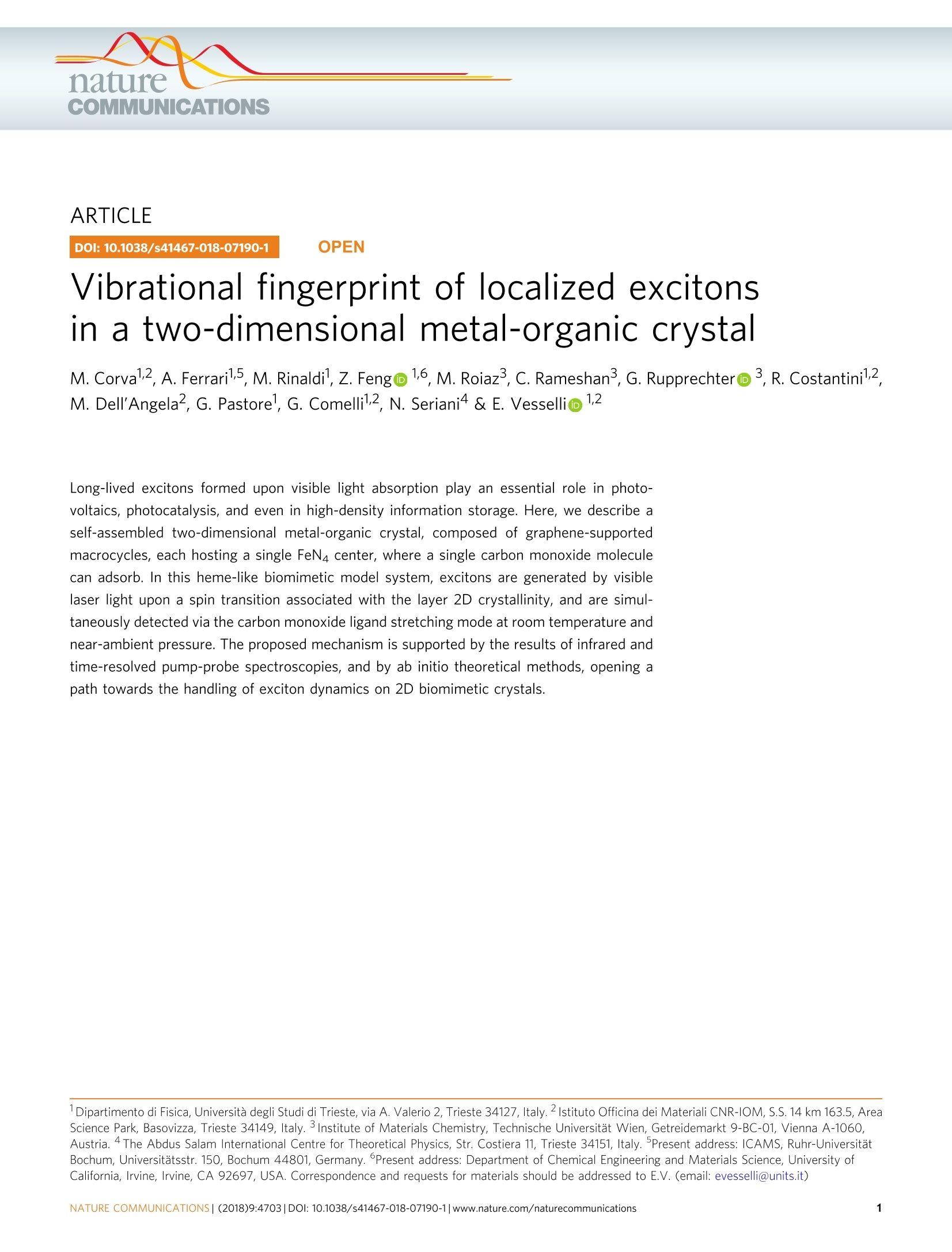
-
2/8
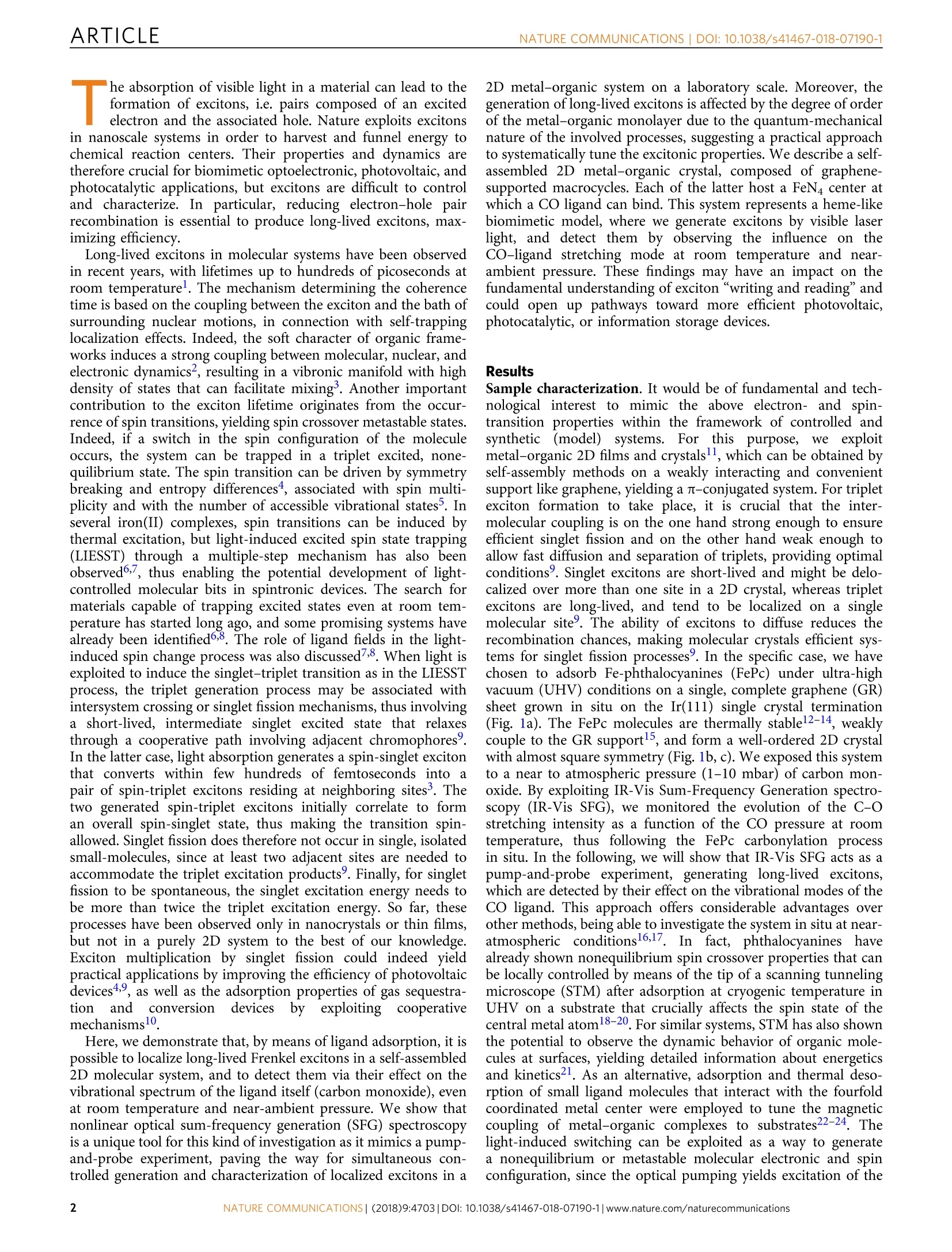
还剩6页未读,是否继续阅读?
继续免费阅读全文产品配置单
北京欧兰科技发展有限公司为您提供《二维有机金属晶体中和频光谱检测方案(其它光谱仪)》,该方案主要用于其他中理化分析检测,参考标准《暂无》,《二维有机金属晶体中和频光谱检测方案(其它光谱仪)》用到的仪器有Ekspla SFG 表面和频光谱分析系统、PG400 系列皮秒光学参量发生/放大器系统。
我要纠错
推荐专场
其它光谱仪
更多相关方案


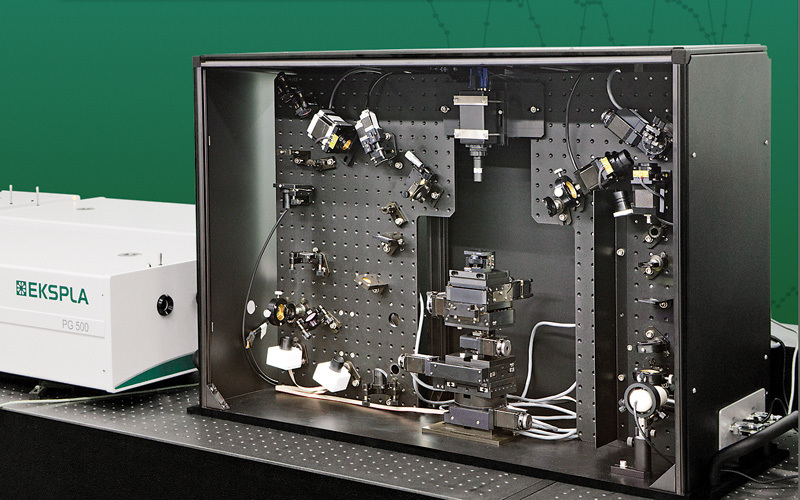

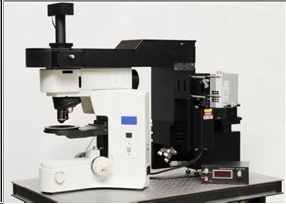
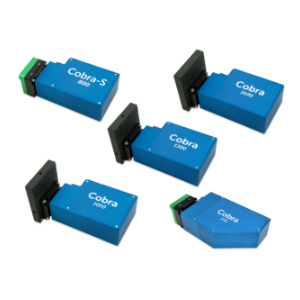
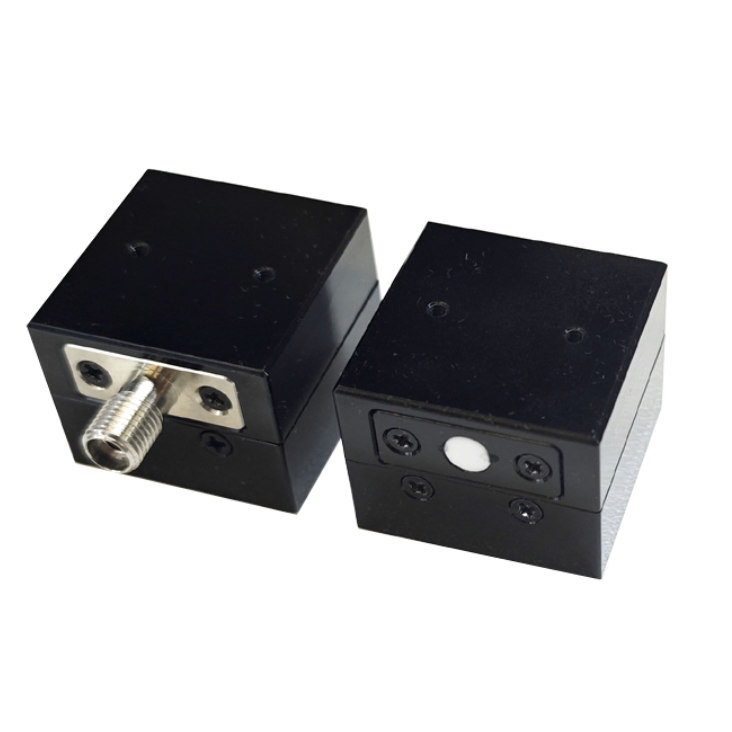



 咨询
咨询




